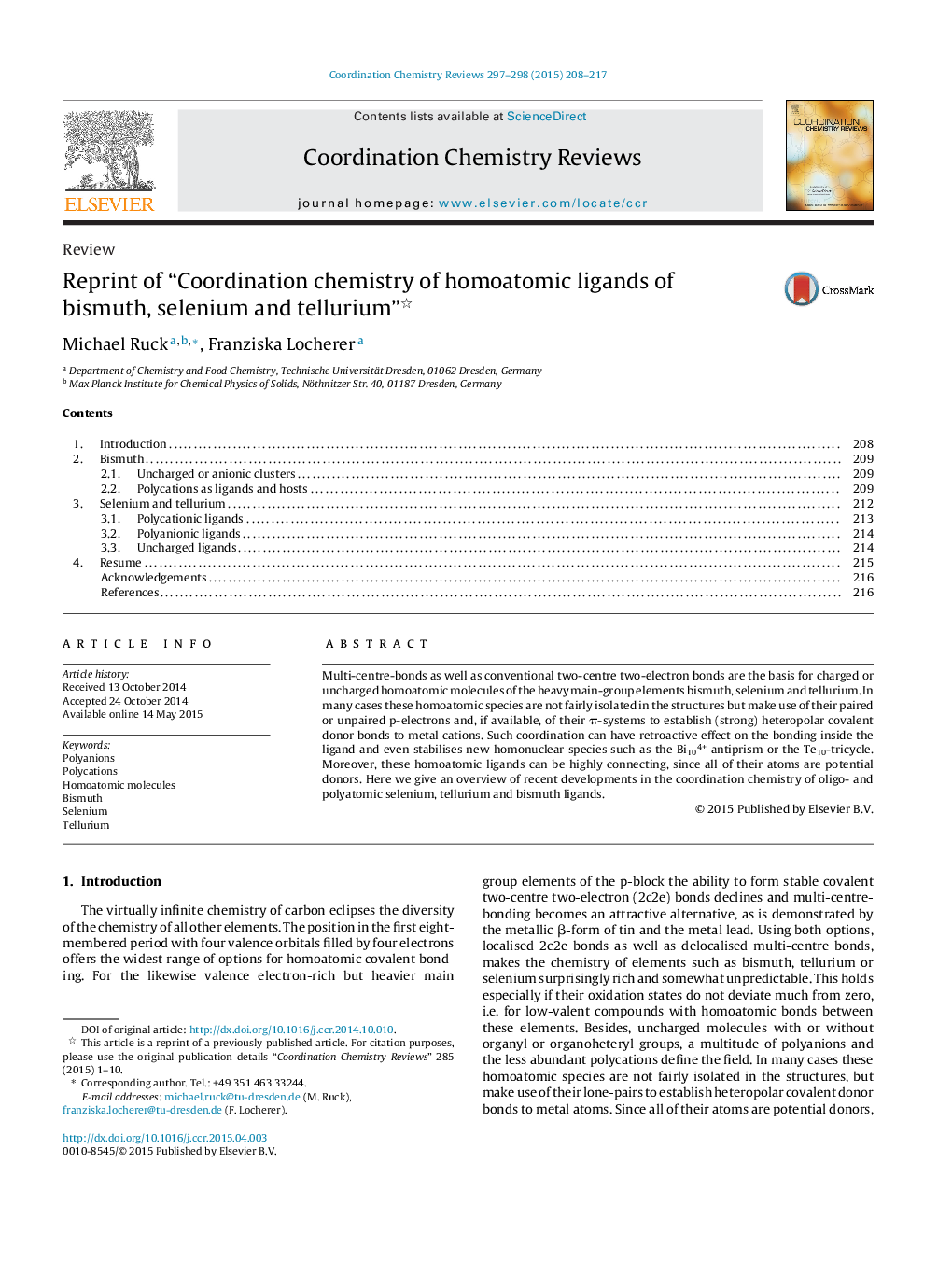| Article ID | Journal | Published Year | Pages | File Type |
|---|---|---|---|---|
| 1299747 | Coordination Chemistry Reviews | 2015 | 10 Pages |
•Bismuth, selenium and tellurium form homoatomic species that act as ligands.•Metal-coordination stabilises new homonuclear species.•Homoatomic ligands can be highly connecting in clusters and coordination polymers.
Multi-centre-bonds as well as conventional two-centre two-electron bonds are the basis for charged or uncharged homoatomic molecules of the heavy main-group elements bismuth, selenium and tellurium. In many cases these homoatomic species are not fairly isolated in the structures but make use of their paired or unpaired p-electrons and, if available, of their π-systems to establish (strong) heteropolar covalent donor bonds to metal cations. Such coordination can have retroactive effect on the bonding inside the ligand and even stabilises new homonuclear species such as the Bi104+ antiprism or the Te10-tricycle. Moreover, these homoatomic ligands can be highly connecting, since all of their atoms are potential donors. Here we give an overview of recent developments in the coordination chemistry of oligo- and polyatomic selenium, tellurium and bismuth ligands.
Graphical abstractFigure optionsDownload full-size imageDownload high-quality image (253 K)Download as PowerPoint slide
